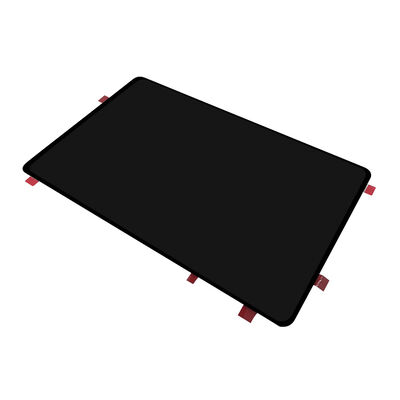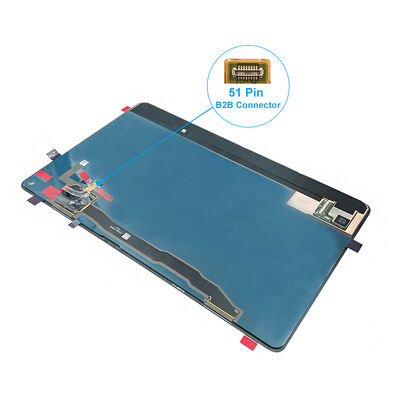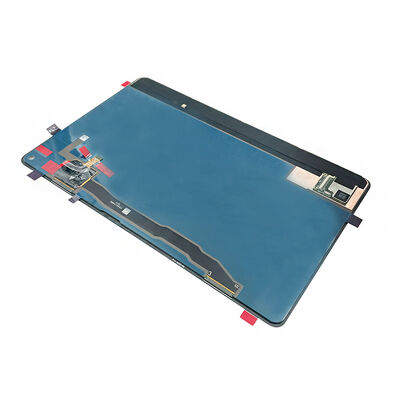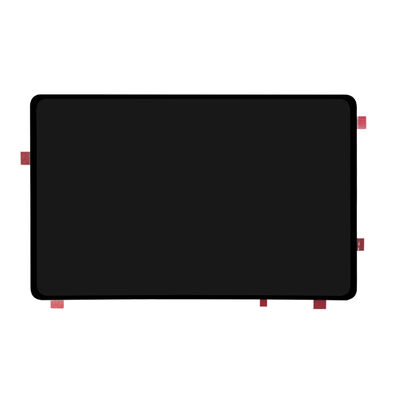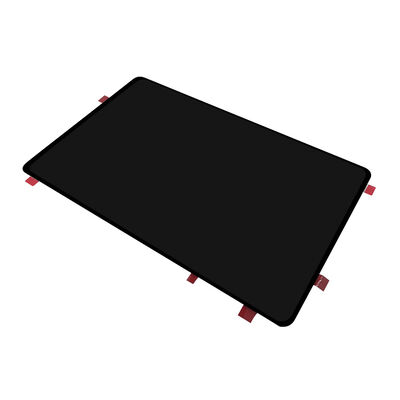सभी उत्पाद
-
एलसीडी टीएफटी डिस्प्ले
-
टच स्क्रीन टीएफटी डिस्प्ले
-
राउंड टीएफटी डिस्प्ले
-
टीएफटी रंग प्रदर्शन
-
AMOLED डिस्प्ले मॉड्यूल
-
माइक्रो ओएलईडी प्रदर्शन
-
बार टाइप टीएफटी
-
वर्ग टीएफटी डिस्प्ले
-
उच्च चमक एलसीडी डिस्प्ले
-
सीओबी एलसीडी डिस्प्ले
-
सूरज की रोशनी पढ़ने योग्य टीएफटी
-
यूएआरटी टीएफटी डिस्प्ले
-
एलसीडी डिस्प्ले मॉड्यूल
-
पीएमओएलईडी डिस्प्ले
-
एपपेपर डिस्प्ले
-
एलईडी डिजिटल प्रदर्शन
-
कैपेसिटिव टच पैनल
11.2 Inch High Resolution AMOLED Display Module with oncell touch, 2560*1536 Dots and 450c/d Brightness
| उत्पत्ति के प्लेस | चीन |
|---|---|
| ब्रांड नाम | HuaXin |
| प्रमाणन | ISO14001/ ISO9001/IATF16949 |
| मॉडल संख्या | HX20QBC73.A |
| दस्तावेज | HX20QBC73.A SPEC.pdf |
| न्यूनतम आदेश मात्रा | 180 |
| मूल्य | $108 |
| पैकेजिंग विवरण | ब्लिस्टर+फोम बॉक्स+बबल बैग+इनसाइड कार्टन+मास्टर कार्टन |
| प्रसव के समय | 6weeks ~ 8weeks |
| भुगतान शर्तें | टी/टी |
| आपूर्ति की क्षमता | 50k प्रति माह |

नि: शुल्क नमूने और कूपन के लिए मुझसे संपर्क करें।
WhatsApp:0086 18588475571
WeChat: 0086 18588475571
स्काइप: sales10@aixton.com
यदि आपको कोई चिंता है, तो हम 24 घंटे ऑनलाइन सहायता प्रदान करते हैं।
xउत्पाद विवरण
| प्रदर्शन प्रौद्योगिकी | एचडी AMOLED डिस्प्ले | नाम | एलसीडी ओएलडी डिस्प्ले |
|---|---|---|---|
| आकार | 11.2 " | संकल्प | 2560आरजीबी*1536 |
| चमक | 450C/डी | इंटरफ़ेस | एमआईपीआई 2-पोर्ट |
| ड्राइविंग आईसी | RM692H0 |
आप अपनी ज़रूरत के उत्पादों को टिक कर सकते हैं और हमारे साथ संदेश बोर्ड में संचार कर सकते हैं।
उत्पाद विवरण
HX20QBC73.A is 11.2 inch amoled display module with oncell touch Display color: 1.07B (RGB x 10 bits) and Display format: 11.2” (2560RGBx1536) and Pixel arrangement: Real RGB
Display Interface: MIPI 2-port D-PHY TP Interface: SPI Driver IC : RM692H0 , Touch screen: On-cell; Touch IC: GT6975P
Product Parameter
| Part No. | HX20QBC73.A |
| Display Size | 11.2 inch AMOLED display |
| Outline Size (mm) | 249.22*154.08 |
| AA Size (mm) | 244.22*146.53 |
| Resolution | 2560RGB*1536 |
| Interface | MIPI 2-port |
| Brightness | 450c/d |
| View Angle | all |
| Driving IC | RM692H0 |
| Touch screen | On-cell |
Product Picture
![]()
![]()
![]()
![]()
Drawing & Pin Definition
OLED Product Knowledge
OLED Advantages:
- Lighter and thinner than LCDs
- High contrast ratio
- High color saturation
- Lower power consumption
OLED Disadvantages:
- AMOLED is more expensive than LCD and TFT
- Lifetime is shorter than LCD and TFT
Company Information
Huaxin Advantage:
- Factory base located at inland city which has cost effective
- Most advanced new equipment which can keep quality stable
- Most processes using fully automatic equipment which has efficiency and stable quality
- Professional engineers and production leaders with 20+ years experience in LCD field
- Self design for customized product
Our Certificates:
- ISO14001
- ISO9001/IATF16949
- SGS of LCD module
Production Capacity
| Annual Production Capacity | 2021 (Current) | 2022 (Goal) | 2023 (Challenge) | 2024 (Challenge) | 2025 (Challenge) | Remark |
|---|---|---|---|---|---|---|
| LCD Production Capacity | 4.5 | 9 | 9 | 9 | 9 | Unit: thousands of logarithms/Day |
| LCM Production Capacity | 70 | 150 | 300 | 450 | 450 | Unit: Thousand piece/Day |
| Backlight Production Capacity | 100 | 200 | 300 | 500 | 500 | Unit: Thousand piece/Day |
| OLED Production Capacity | 10 | 20 | 30 | 40 | 50 | Unit: Thousand piece/Day |
Product Application
- Safety box & instrument
- Lock & smart home
- Transmitter & watch
- Watch & radio
- Collimator & navigator
AMOLED Display Characteristics
- Self-Emissive Pixels
- High Contrast Ratio
- Color Accuracy and Vibrancy
- Wide Viewing Angles
- Power Efficiency
- Thinness and Flexibility
- Fast Response Time
Power Efficiency Comparison
1. Power Consumption:
AMOLED displays consume power on a per-pixel basis, meaning that pixels displaying black or dark content consume very little power, while pixels displaying bright or white content consume more power. LCD and LED displays require a constant backlight that consumes power regardless of the displayed content.
2. Content Dependency:
AMOLED displays are more power-efficient for content with dark or black areas, as individual pixels can be turned off to save power. LCD and LED displays consume a relatively constant amount of power as the backlight remains active.
3. Brightness Control:
AMOLED displays can dynamically adjust pixel brightness for better efficiency in low-brightness scenarios. LCD and LED displays typically have fixed backlight brightness, resulting in higher power consumption.
4. Display Size:
AMOLED displays tend to be more power-efficient for smaller sizes as consumption scales with pixel count. Larger LCD/LED displays may require more power-hungry backlights, reducing efficiency compared to same-size AMOLED displays.
अनुशंसित उत्पाद



